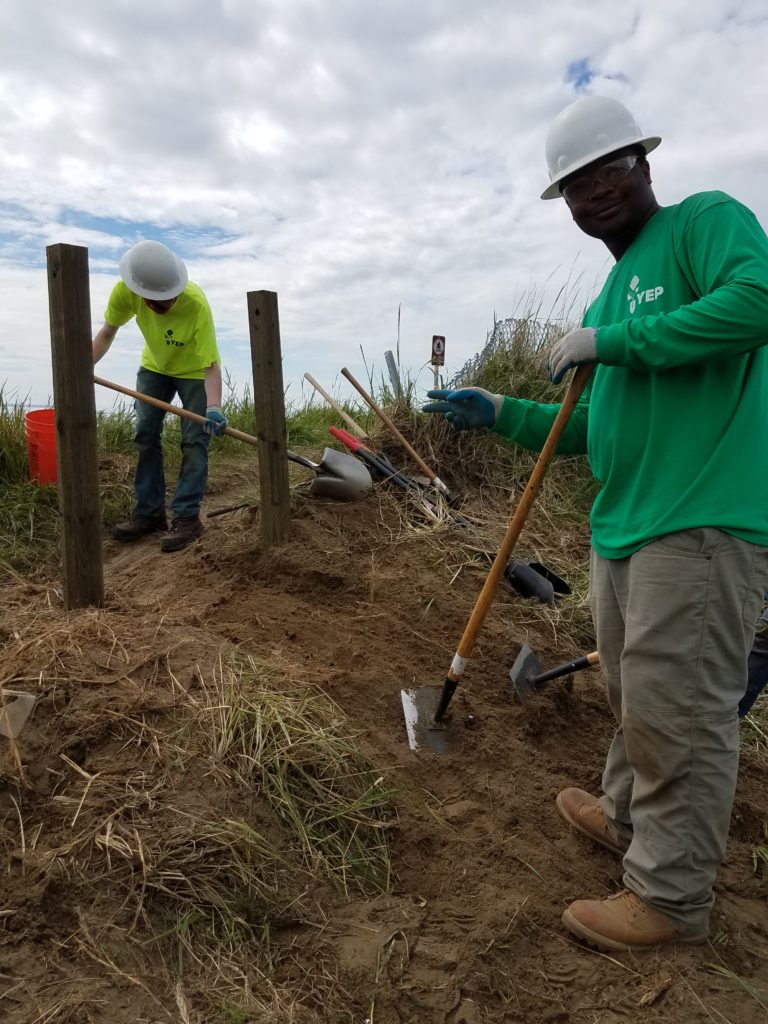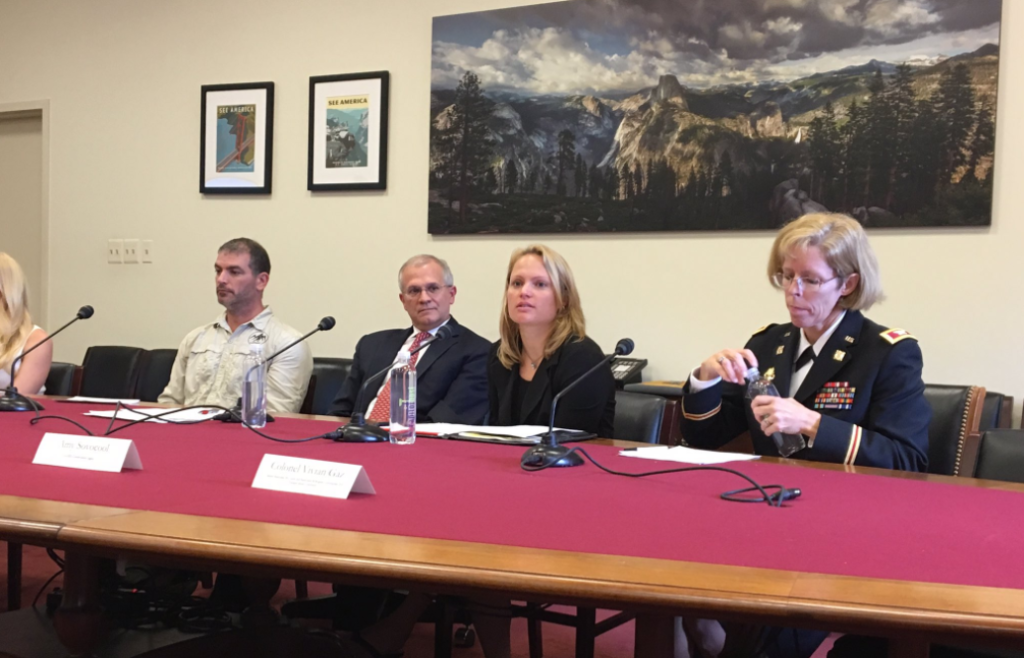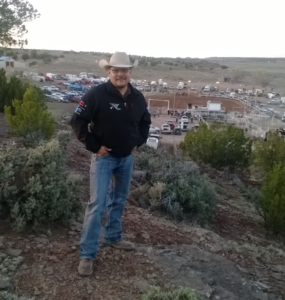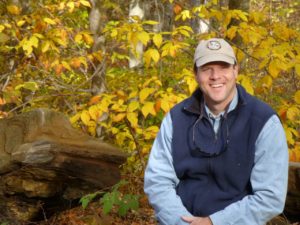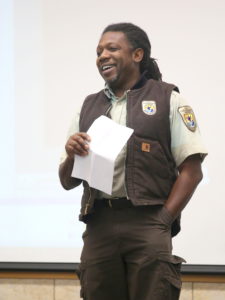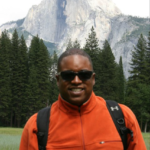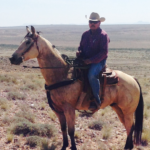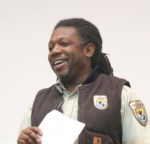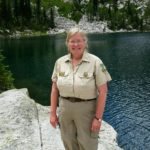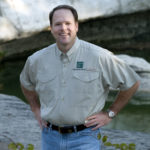Media Contact
Hannah Traverse
The Corps Network
1275 K Street, NW – Suite 1050
Washington, DC 20005
Phone: 202.737.6272
Email: htraverse@corpsnetwork.org
The Partnership for the 21st Century Conservation Service Corps (21CSC) Announces 2017 Winners of 21CSC Champion Award
Award recognizes leaders within agencies and organizations with which 21CSC organizations partner
WASHINGTON, DC – Today, January 12, 2017, The Partnership for the 21st Century Conservation Service Corps (21CSC) announced the 2017 winners of the 21CSC Champion of the Year Award. Recipients include both National and Regional honorees. Awardees will be recognized on February 14th during the annual meeting of the Partnership for the 21CSC. This meeting is part of The Corps Network 2017 National Conference.
The 21CSC is a bold national effort to put thousands of America’s young people and veterans to work protecting, restoring and enhancing the great outdoors. At the heart of the 21CSC are over 200 nonprofit and government-operated Corps that, through partnerships with resource management agencies and conservation organizations, annually engage roughly 25,000 young people and veterans in maintenance and improvement projects on public lands and waters.
The existence of the 21CSC depends on partnerships between Corps and project partners that are committed to engaging youth in the conservation and preservation of America’s natural and historic treasures. The 21CSC Champion of the Year Award recognizes individuals from these partner organizations – including nonprofits and resource management agencies – who have gone above and beyond to engage Corps and help train the next generation of conservation and preservation professionals. Champions are selected through a nomination process.
This is the third year the Partnership for the 21CSC will present the 21CSC Champion of the Year Award. Led by The Corps Network and Conservation Legacy, the Partnership for the 21CSC is an advisory group of key federal, state, local and non-profit leaders that supports the development and implementation of the 21CSC to reach its goal of being a preeminent strategy for addressing America’s most pressing conservation needs.
“The 21CSC is based on agreements between Corps and project partners, but the real backbone of the 21CSC are the relationships developed between the young people enrolled in Corps and the public lands on which they serve,” said Mary Ellen Sprenkel, CEO of The Corps Network and Co-Chair of the Partnership for the 21CSC. “We in the Corps community are incredibly grateful to the many project partners who understand the importance of giving America’s young people the opportunity to serve their country and build meaningful connections with the natural world. Thanks to the efforts of extraordinary people like those we honor with this award, today’s Corpsmembers are developing the skills to become tomorrow’s conservation and preservation experts.”
“Thank you Merlene, George, Calvert, Lamar, Joni and Carter – and to all of the 21CSC Champion of the Year finalists – for believing in the 21CSC,” said Harry Bruell, CEO and President of Conservation Legacy and Co-Chair of the Partnership for the 21CSC. “Corps depend on your dedication to thinking creatively and finding new and different ways to engage 21CSC programs to build our rural and urban economies and strengthen America’s unique and vital natural assets. We sincerely appreciate all that you do to make new 21CSC projects possible and provide opportunities for all Americans to serve their country.”
The 2017 winners of the 21CSC Champion of the Year Award are:
*National Distinction Awardees
Merlene Mazyck
U.S. Forest Service (USFS) – National Office
As the Volunteers and Service National Program Manager for the U.S. Forest Service, Merlene Mazyck provides strategic leadership and policy guidance for a program that annually engages more than 100,000 volunteers and service members on America’s 175 national forests and grasslands. Through her advocacy, leadership, and innovation, Mazyck provides support within USFS to implement the 21st Century Conservation Service Corps (21CSC). She advocated for and acquired millions of dollars for youth and veteran programs in the Forest Service. Since 2014, USFS investments of $61.3 million leveraged partner contributions of $51.4 million to engage 30,000 youth and veterans in protecting, restoring, and enhancing Forest lands. As a key member of the 21CSC Working Group – comprised of staff from several federal resource management agencies – Mazyck has played a role in developing and executing federal policy surrounding the 21CSC. Significantly, she manages the vetting process to ensure that organizations interested in joining the 21CSC comply with the initiative’s principles.
George McDonald
National Park Service (NPS) – National Office
George McDonald has served as National Youth Programs Manager for the National Park Service since 2008. In this role, McDonald has led successful efforts to launch numerous programs designed to enhance and increase the number of underserved, minority and disadvantaged youth participating in park activities and engaging in employment and educational opportunities in parks. Significantly, he helped launch NPS’s Youth Intern Program in 2009 to provide youth and young adults an intellectually challenging experience and exposure to a range of NPS job opportunities. McDonald has partnered with numerous 21CSC organizations, helping develop such programs as Greening Youth Foundation’s Historically Black Colleges and Universities Internship, the Latino Heritage Internship Program, and the Mosaics in Science Intern Program with Environment for the Americas and Greening Youth Foundation. McDonald has not only championed the 21CSC within NPS, but has taken time to write congressional responses and inform leaders across the Department of the Interior about the value of this initiative.
*Regional Champions of the Year
Calvert Curley
Bureau of Indian Affairs (BIA) – Natural Resources Department, Navajo Regional Office
Dr. Calvert Curley is a Natural Resource Manager for the Bureau of Indian Affairs (BIA) Navajo Regional office. He has also worked as a Natural Resource Manager for BIA Navajo Ft. Defiance Agency and as an Air Toxics Department Manager for the Navajo Nation EPA. He is Navajo (Dine) from Ganado, AZ. Dr. Curley has worked with 21CSC youth programs in his former capacity with the BIA Ft. Defiance Agency, as well as in his current capacity. He was one of the first BIA Managers to partner with Southwest Conservation Corps to field Ancestral Lands crews on the Navajo Nation. Ancestral Lands is a SCC program that specifically engages Native American youth in meaningful conservation projects on Tribal lands. Thanks to Dr. Curley’s support, the Ancestral Lands Navajo Program has grown and thrived, demonstrating to other BIA offices that partnerships with Corps can be an effective way to complete agency work while also empowering local youth. Dr. Curley has become a national leader for the engagement of Native youth in 21CSC programs.
Lamar Gore
U.S. Fish & Wildlife Service (USFWS) – John Heinz National Wildlife Refuge
As the John Heinz National Wildlife Refuge Manager, Lamar Gore strives to work with partners, the community, and schools to meet both refuge and community goals in Philadelphia, PA. He began his career with the U.S. Fish and Wildlife Service (USFWS) as a biological technician at the Montpelier Office of Fishery Assistance, later working with several National Wildlife Refuges, other USFWS programs, and the Northeast Regional Office. At John Heinz, Gore helped develop environmental education programs at three local schools. Additionally, working with Audubon Pennsylvania and the Student Conservation Association (SCA), Gore has developed relationships with the public to create green space (habitat, gardens, learning spaces, etc.) in Philadelphia neighborhoods. He has also worked in partnership with the Clean Air Council, the city and others to improve multi-use trail connections from John Heinz to the community. Gore is an advocate for SCA programs, and has attained support to get more youth involved in local projects. He has a vision to make seamless connections between John Heinz and the surrounding community. The result of Gore’s work has generated new funding to create a youth community restoration program, putting youth to work on conservation projects during the school year.
Joni Packard
U.S. Forest Service (USFS) – Northern Region
Joni Packard has been with the U.S. Forest Service (USFS) for 25 years, working in numerous capacities in Washington, Alaska, Idaho and Montana. She now serves as the Regional Volunteer, Youth and 21CSC Program Coordinator for the Northern Region, covering Montana, northern Idaho, and North and South Dakota. Packard has been involved with Corps since she served as a Youth Conservation Corps member in the 1970s. In her current role, she has partnered with numerous 21CSC organizations, helping lead efforts to engage more veterans and diverse youth in conservation projects. Packard has championed and sought additional Forest Service funding for Corps and other 21CSC partner engagement efforts, increasing additional funding to Northern Region field units from $150,000 in FY12 to almost $1 million in FY16. Packard is considered a leader by her peers in other regions and as a trendsetter for creative ways to engage youth on public lands.
Carter Smith
Texas Parks & Wildlife Department
As the Executive Director of the Texas Parks and Wildlife Department (TPWD), Carter Smith oversees 3,100 professionals across 11 divisions. In this role, he has been a significant proponent of the Texas Children in Nature initiative, created in 2010 to combat the disconnect between children and the natural world. Smith helped form public-private partnerships uniting natural resource agencies with the non-profit, health, education and business communities. Thanks to Smith and TPWD, the initiative is today comprised of nearly 400 partner organizations across the state that annually help 4 million kids get outside to play, learn and grow in nature. Additionally, Smith has developed a longstanding partnership with the Texas Conservation Corps at American YouthWorks to connect youth with conservation work on TPWD lands. Under his tenure, a dedicated year-round trail crew was created to engage Corpsmembers in full-time trail building and maintenance in parks across the state. Smith has also leveraged private funding to involve additional crews in wildfire recovery and restoration work.
About the 21st Century Conservation Service Corps (21CSC)
The 21st Century Conservation Service Corps (21CSC) is a bold national effort to put thousands of young people and veterans to work protecting, restoring, and enhancing America’s great outdoors.
The 21CSC is based on public-private partnerships between federal resource management agencies and the private sector. The goal of these partnerships is to increase civilian national service positions on public lands and encourage the use of Corps to meet the maintenance needs of land and water management agencies at no additional cost to taxpayers.
About Conservation Legacy
Conservation Legacy is a national organization dedicated to supporting locally based conservation service programs. We operate and support programs that provide service and work opportunities for a diverse group of individuals to complete important conservation and community projects for the public benefit. Founded in 1998 to continue the legacy of the Civilian Conservation Corps of the 1930s, Conservation Legacy programs include: Southwest Conservation Corps, Great Appalachian Valley Conservation Corps, Southeast Conservation Corps, Arizona Conservation Corps, Preserve America Youth Summit and BRIDGE Network.
About The Corps Network
Established in 1985, The Corps Network is the national association of service and conservation Corps. Our 130+ member Corps annually provide over 25,000 youth and veteran Corpsmembers the opportunity to serve our country through work-based conservation, resource management, lands access, recreation, and disaster response projects on public lands and in rural and urban communities. Through their service, Corpsmembers obtain in-demand skills and advance their education on the path to careers.
The Corps Network supports Corps by advocating on their behalf, providing access to funding and project opportunities, and by offering expertise in Corps operations and programming. To learn more about The Corps Network, please visit www.corpsnetwork.org.

